When to Harvest Carrots for Best Flavor UK: Expert Timing Guide
Discover the secrets to harvesting carrots at peak flavor in the UK. Learn how to identify the perfect timing, test for readiness, and use frost to your advantage for the sweetest, most delicious carrots from your garden.
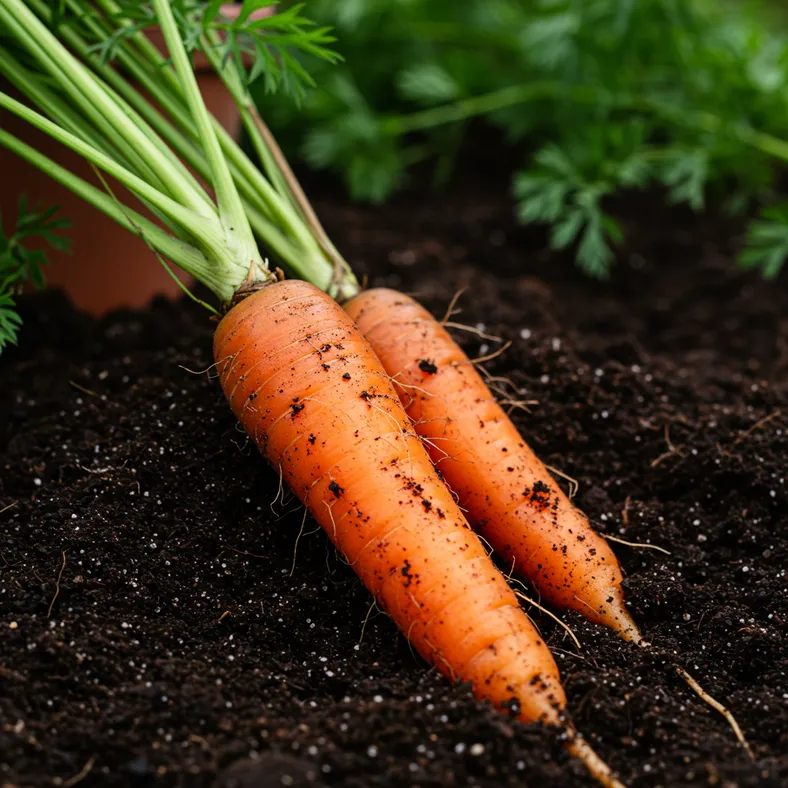
Nothing beats the sweet, crisp crunch of a perfectly timed carrot harvest. In the UK's unique climate, knowing when to harvest carrots for maximum flavor can transform your garden-to-table experience from ordinary to extraordinary. The difference between a woody, bitter carrot and one that's sweet and tender often comes down to just a few weeks – or even days.
UK gardeners have a distinct advantage when it comes to carrot flavor development. Our cooler autumns and occasional frosts actually enhance the natural sweetness of carrots, converting starches to sugars in a process that warmer climates simply can't replicate. But timing is everything, and understanding the subtle signs of carrot readiness will ensure you harvest your crop at its absolute peak.
Understanding Carrot Maturity Stages
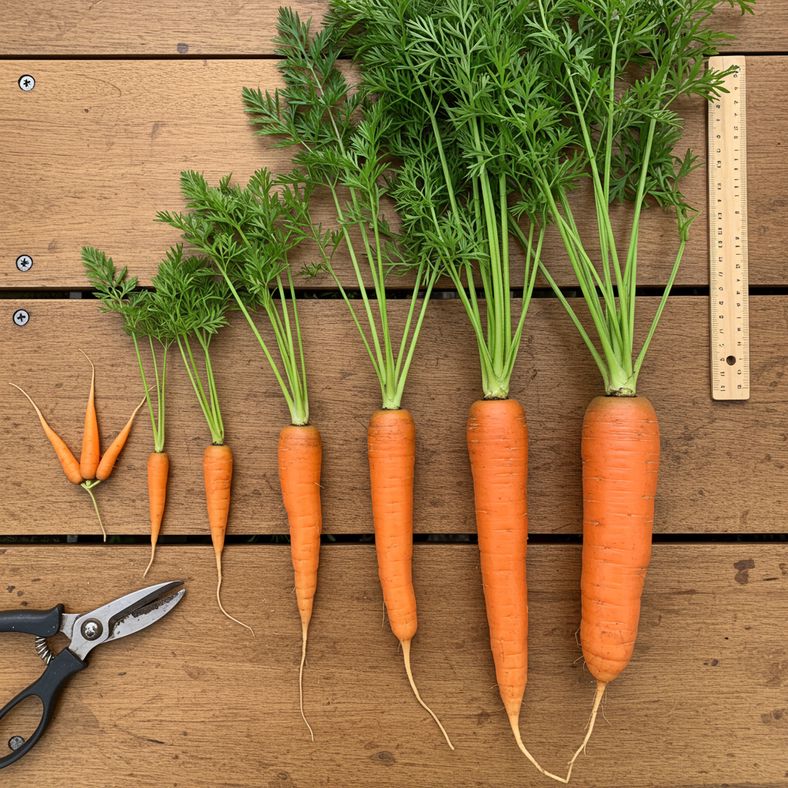
Carrots don't simply reach a single point of readiness – they go through distinct maturity stages, each offering different culinary opportunities and flavor profiles. Understanding these stages is crucial for timing your harvest to match your intended use.
Baby Carrots (6-8 weeks from sowing): These finger-sized delights are incredibly sweet and tender, perfect for eating raw or lightly steaming. At this stage, they're about 10-15cm long and have the most delicate flavor.
Young Carrots (10-12 weeks): Reaching 15-20cm in length, these carrots maintain excellent sweetness whilst developing more substantial flavor. They're ideal for roasting and still tender enough for salads.
Mature Carrots (14-16 weeks): Full-sized carrots at 20-25cm long offer the best balance of sweetness and robust carrot flavor. These are perfect for cooking, storing, and general kitchen use.
Storage Carrots (18+ weeks): Left to fully mature, these develop the strongest flavors and best keeping qualities. They may be slightly less sweet but offer excellent storage potential through winter.
The key to maximum flavor lies in harvesting during the sweet spot between young and mature stages, typically around 12-14 weeks from sowing, when sugar content peaks whilst maintaining tender texture.
Visual Signs Your Carrots Are Ready
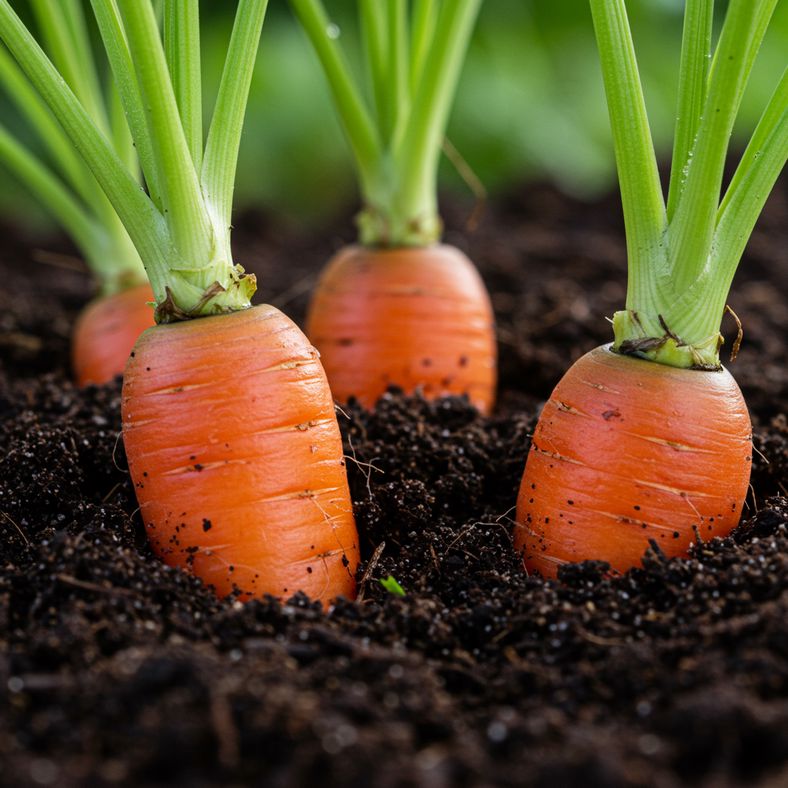
Learning to read the visual cues is essential for timing your carrot harvest perfectly. Unlike many vegetables, carrots give subtle but reliable signals when they've reached peak flavor development.
Shoulder Width: The most reliable indicator is the width of the carrot's shoulder – the area where the root meets the foliage. Gently brush away soil from around the crown to check the diameter. For optimal flavor, aim for shoulders that are 2-3cm wide for standard varieties.
Crown Color: The exposed crown should show a vibrant orange color (for orange varieties) rather than pale or greenish tones. This indicates full sugar development and proper maturation.
Foliage Condition: Healthy, dark green foliage suggests the carrot is still actively growing and developing flavor. However, slightly yellowing outer leaves can indicate the plant is beginning to focus energy into the root – often the perfect harvest window.
Soil Cracking: In drier conditions, you might notice small cracks in the soil around mature carrots as the expanding roots push against the earth. This is often a sign they're ready for harvest.
Easy Lifting: When you gently grasp the foliage at soil level and give a slight upward pressure, ready carrots should feel firm and substantial, not loose or underdeveloped.
Remember that these visual cues work best when combined with knowledge of your sowing date and variety. Early varieties may show readiness signs sooner than maincrop types.
The Flavor-Frost Connection
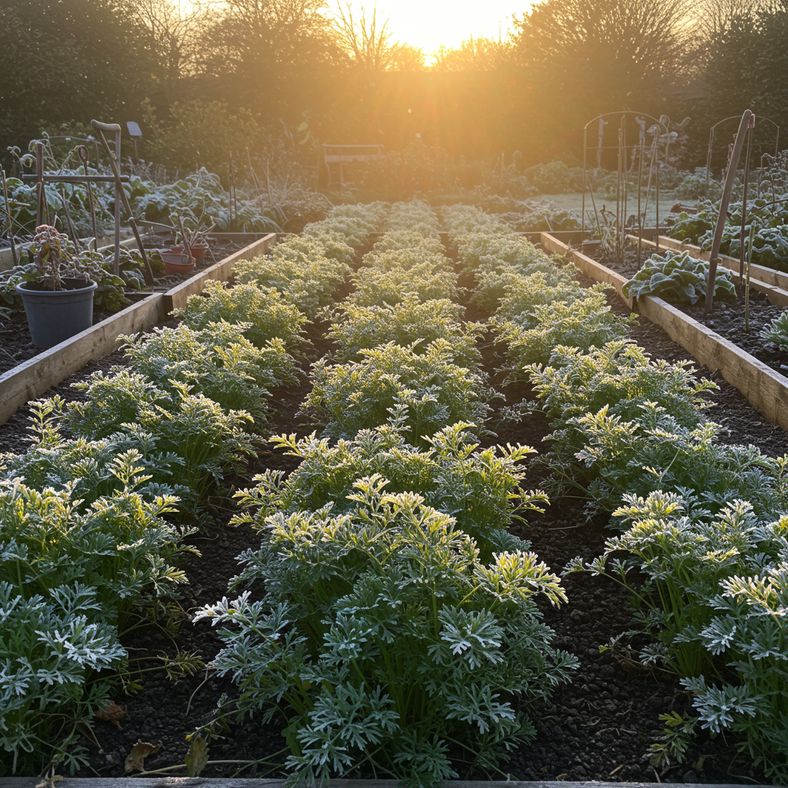
One of the UK's greatest advantages for carrot growing is our climate's ability to naturally enhance sweetness through frost exposure. Understanding this process can dramatically improve your harvest's flavor quality.
How Frost Improves Flavor: When temperatures drop below 4°C, carrots begin converting stored starches into sugars as a natural antifreeze mechanism. This process, called cold-sweetening, can increase sugar content by up to 50%, resulting in noticeably sweeter, more flavorful carrots.
Optimal Exposure: The best flavor development occurs after 2-3 light frosts (temperatures between 0°C to -2°C) rather than one severe freeze. This gradual process allows maximum starch conversion without damaging the root structure.
Timing Strategy: Plan your main harvest for late October through November, allowing autumn-sown carrots to experience early frosts before lifting. For spring-sown crops, delay final harvest until after the first autumn frosts for enhanced sweetness.
Protection Balance: While light frosts improve flavor, prolonged freezing (below -3°C) can damage roots. Use fleece or straw mulch to protect against severe frosts whilst allowing beneficial light freezes to occur.
Varieties for Frost Sweetening: Maincrop varieties like 'Autumn King' and 'Bangor' respond particularly well to frost sweetening, whilst some early varieties may be more sensitive to cold damage.
Monitor weather forecasts during your harvest window – the ideal scenario is harvesting 2-3 days after a light frost when the carrots have had time to complete the sugar conversion process.
Testing Carrot Readiness
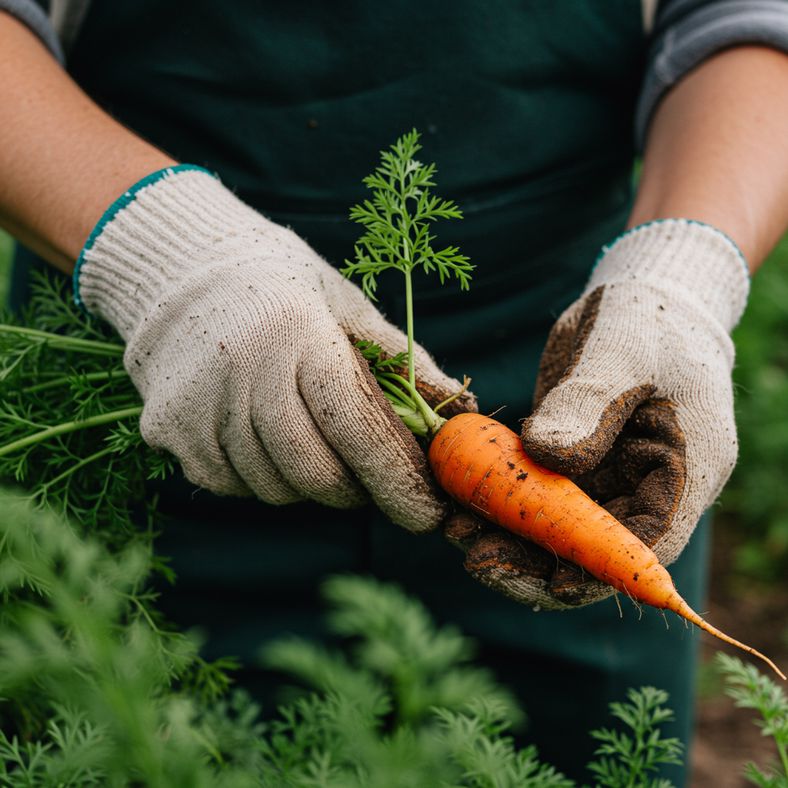
Physical testing provides the most accurate assessment of carrot readiness and flavor development. These hands-on techniques will ensure you harvest at the perfect moment for maximum taste.
The Gentle Lift Test: Carefully grasp the foliage close to the soil surface and apply gentle upward pressure. Ready carrots should feel substantial and resist pulling, whilst underdeveloped ones may lift too easily or feel hollow.
Crown Inspection Method: Use your fingers or a small trowel to carefully brush soil away from the crown area. A mature carrot ready for harvest should show 2-3cm of exposed shoulder with vibrant color and firm texture.
Sample Harvest: Select one or two carrots from different areas of your crop for test harvesting. Clean and taste these samples to assess flavor development, sweetness, and texture before committing to a full harvest.
The Snap Test: Fresh, properly developed carrots should produce a crisp 'snap' when broken, rather than bending or feeling rubbery. This indicates optimal moisture content and cellular structure.
Core Examination: When you cut a test carrot in half, the core should be small and the same color as the outer flesh. Large, pale cores indicate the carrot needs more time to develop full flavor.
Texture Assessment: The flesh should feel firm and dense, not spongy or dry. Properly timed carrots have a satisfying resistance when bitten, indicating peak sugar and moisture balance.
Perform these tests on sample carrots from different parts of your growing area, as soil conditions can create variations in development rates even within the same row.
Harvesting Techniques for Maximum Flavor

Proper harvesting technique is crucial for maintaining flavor quality and preventing damage that can affect taste and storage potential. The method you choose depends on soil conditions, carrot size, and intended use.
Hand Pulling Method: For loose, sandy soils and smaller carrots, grip the foliage firmly at the base and pull straight up with a slight twisting motion. This works best when soil is slightly moist but not waterlogged.
Fork-Assisted Lifting: For larger carrots or heavy soils, use a garden fork to gently loosen soil around the roots before lifting. Insert the fork 15cm away from the row and angle slightly outward to avoid piercing the roots.
Optimal Soil Conditions: Harvest when soil is slightly moist but not soggy. If it's been very wet, wait for surface moisture to drain, or if very dry, water lightly 24 hours before harvesting to prevent root breakage.
Timing Within the Day: Early morning or late afternoon harvesting helps preserve moisture content and flavor. Avoid harvesting during midday heat, which can stress the roots and affect taste.
Gentle Handling: Handle harvested carrots carefully to prevent bruising, which can lead to bitter flavors developing. Support the root body when lifting rather than pulling solely on the foliage.
Immediate Care: Brush off excess soil gently but don't wash until ready to use. Leave a 2cm stub of green top to prevent moisture loss whilst avoiding regrowth that can make carrots bitter.
For the sweetest possible flavor, consider using premium carrot seeds that are specifically bred for UK growing conditions and enhanced sweetness development.
Varietal Timing Differences
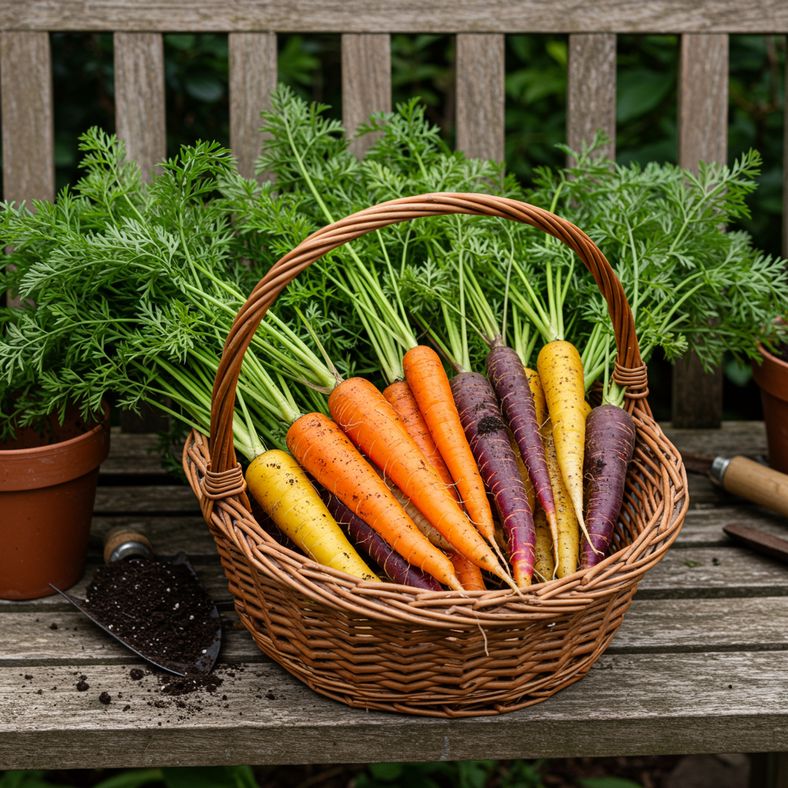
Different carrot varieties reach peak flavor at varying times and respond differently to UK growing conditions. Understanding these differences helps you plan successive harvests and maximize flavor from each type.
Early Varieties (60-70 days): Varieties like 'Amsterdam Forcing' and 'Early Nantes' reach peak sweetness quickly but have shorter flavor windows. Harvest these within 1-2 weeks of maturity for best taste, as they can become woody if left too long.
Maincrop Varieties (70-90 days): Standard varieties like 'Chantenay' and 'Danvers' offer the longest harvest window and best flavor stability. These maintain peak sweetness for 3-4 weeks once mature, making them ideal for extended harvesting.
Storage Varieties (90+ days): Late varieties such as 'Autumn King' and 'Long Red Surrey' develop the most complex flavors but require patience. They benefit significantly from frost exposure and can actually improve in flavor if left in ground during mild UK winters.
Specialty Varieties: Purple, white, and yellow carrots often have different flavor development patterns. Purple varieties tend to be sweetest when harvested younger, whilst white varieties develop their distinctive mild flavor over longer periods.
UK-Adapted Varieties: Choose varieties specifically bred for UK conditions like 'Resistafly' or 'Flyaway' which not only resist local pests but are bred for optimal flavor development in our climate.
Succession Planning: Plant early varieties for summer harvests, maincrop for autumn, and storage types for winter eating. This provides year-round fresh carrots at peak flavor rather than trying to store less suitable varieties.
Keep detailed records of sowing dates and variety performance to refine your timing for future seasons and identify which varieties provide the best flavor in your specific growing conditions.
Weather Considerations for UK Harvests
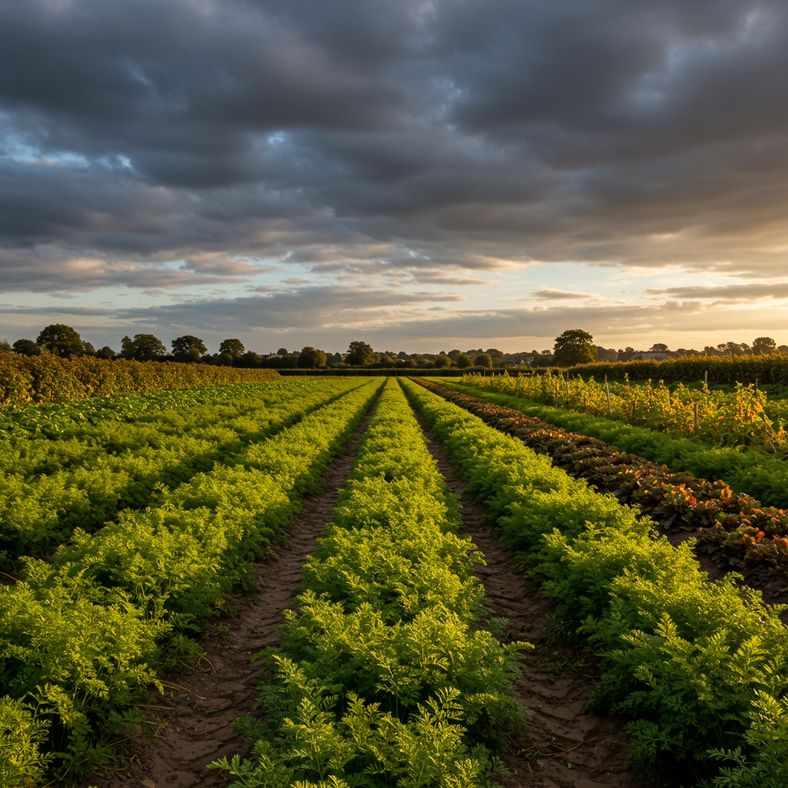
UK weather patterns significantly impact carrot flavor development and harvesting decisions. Understanding how to work with our variable climate ensures optimal taste regardless of the season's challenges.
Wet Season Strategies: During particularly wet periods, carrots can become waterlogged and lose flavor concentration. If prolonged rain is forecast, consider harvesting slightly early rather than risking diluted taste. Well-drained soil becomes even more critical in wet years.
Drought Responses: Extended dry periods can cause carrots to become woody and bitter. However, if plants have been consistently watered through drought, the flavor often concentrates beautifully. Harvest during drought requires careful soil preparation – water deeply 24 hours before lifting.
Temperature Fluctuations: UK's variable autumn temperatures can be ideal for flavor development. Warm days followed by cool nights encourage sugar accumulation whilst maintaining good texture. Monitor forecasts to time harvests after these beneficial temperature swings.
Wind and Exposure: Strong winds can stress plants and affect flavor development. In exposed locations, consider harvesting before severe weather rather than risking plant damage that can lead to off-flavors.
Seasonal Timing: Autumn harvests (September-November) typically produce the sweetest carrots due to cooling temperatures and increased daylight hours earlier in the season. Spring harvests can be excellent if plants survived winter protection.
Micro-climate Awareness: South-facing slopes may produce earlier, potentially less sweet carrots, whilst north-facing areas often develop superior flavor due to slower, steadier growth conditions.
Keep a weather diary alongside your harvest records to identify patterns between weather conditions and carrot quality in your specific location.
Storage vs Fresh Eating Harvest Timing
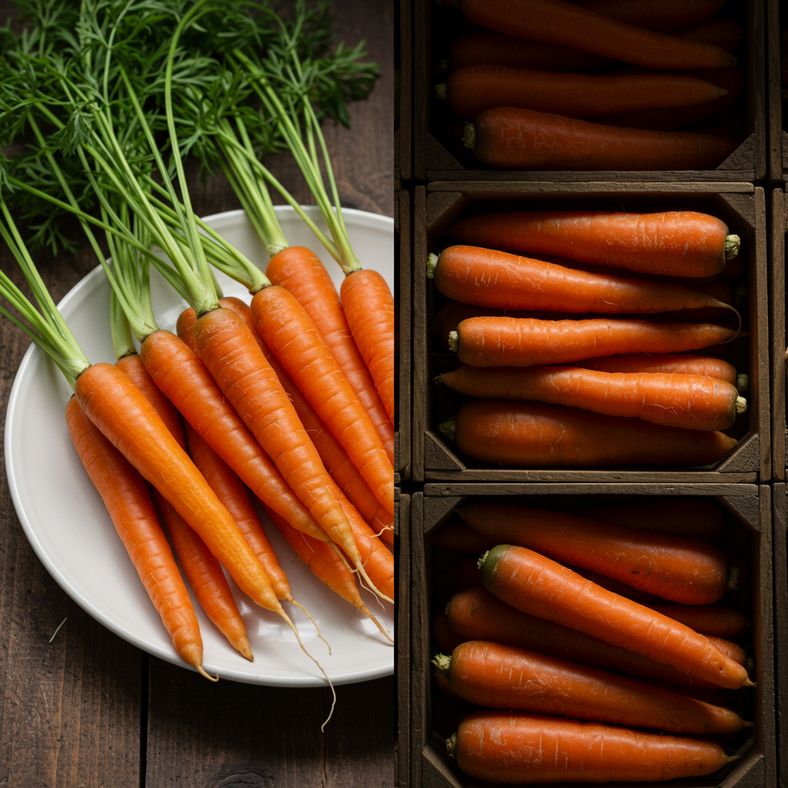
The intended use of your carrots – immediate consumption or long-term storage – should influence your harvest timing strategy. Each approach requires different considerations for optimal results.
Fresh Eating Harvest: For immediate consumption, prioritize peak sweetness over storage potential. Harvest when carrots reach the sweet spot of maturity (12-14 weeks) with maximum sugar content. These carrots are best used within 2-3 weeks of harvest.
Short-term Storage (1-3 months): Harvest slightly more mature carrots that have developed stronger cell walls whilst maintaining good flavor. These should be lifted before severe frosts but after light cold exposure for sweetness enhancement.
Long-term Storage (3-6 months): Storage carrots should be fully mature with robust structure. Harvest these after significant cold exposure but before ground freezing. They may be less sweet initially but develop complex flavors during storage.
Succession Strategy: Plan multiple harvests: baby carrots for immediate use in summer, young carrots for autumn fresh eating, and mature storage carrots for winter supplies. This maximizes both flavor enjoyment and practical storage needs.
Processing vs Fresh Use: Carrots intended for cooking, soups, or processing can be harvested slightly later when flavor is more concentrated, whilst those for raw eating should prioritize tenderness and sweetness.
Market Garden Approach: If growing for sale or sharing, harvest a range of sizes to meet different customer preferences, from tender baby carrots to robust storage types.
Consider investing in quality garden secateurs for clean harvesting that won't damage roots during the lifting process, ensuring better flavor preservation and storage potential.